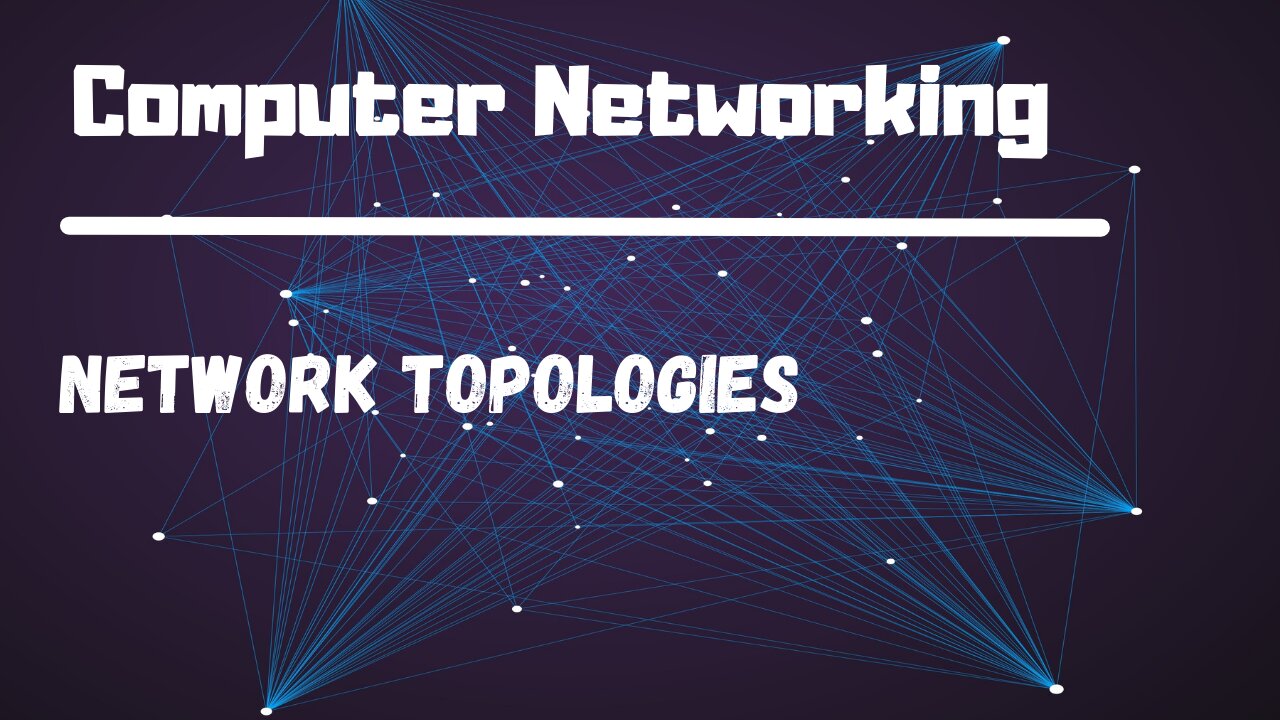Premium Only Content

Computer Networking Topologies Lecture 2
Welcome to this video on computer networking topologies!
Computer networking topologies refer to the physical layout of a network. In this video, we will be discussing the different types of topologies that are commonly used in computer networking.
The first topology we will be discussing is the bus topology. In a bus topology, all devices are connected to a single cable. This cable acts as a shared communication medium and all devices receive the same signal. One advantage of the bus topology is that it is easy to install and requires less cable than other topologies. However, it can be difficult to identify and isolate problems in the network.
The second topology we will be discussing is the star topology. In a star topology, all devices are connected to a central hub or switch. This allows for easier troubleshooting and isolation of problems. The downside is that the hub or switch can become a single point of failure.
The third topology we will be discussing is the ring topology. In a ring topology, each device is connected to the device next to it, forming a closed loop. Data is transmitted around the loop until it reaches its destination. One advantage of the ring topology is that it can handle high traffic volumes. However, if one device fails, the entire network can be affected.
The fourth topology we will be discussing is the mesh topology. In a mesh topology, each device is connected to every other device in the network. This allows for redundant paths, so if one device fails, the data can be routed through another path. This topology is often used in large-scale networks, such as the internet.
Finally, we will briefly discuss the hybrid topology. A hybrid topology is a combination of two or more topologies. For example, a network may use a star topology for the main network, with smaller bus topologies branching off from the main network.
That concludes our discussion of computer networking topologies. We hope you found this video informative and helpful. If you have any questions or comments, please leave them below!
-
 LIVE
LIVE
Badlands Media
5 hours agoDevolution Power Hour Ep. 398
8,479 watching -
 LIVE
LIVE
Inverted World Live
3 hours agoInvasion of the Lectern Guy | Ep. 124
2,495 watching -
 LIVE
LIVE
TimcastIRL
2 hours agoDemocrats Declare STATE OF EMERGENCY Over ICE Raids, DHS ATTACKED, CIVIL WAR | Timcast IRL
8,223 watching -
 2:37:25
2:37:25
TheSaltyCracker
3 hours agoAlex Jones Gets Screwed ReeEEStream 10-15-25
41.3K139 -
 LIVE
LIVE
Man in America
7 hours agoPaper Silver IMPLODES: Experts Predict HUNDREDS PER OUNCE is Coming
984 watching -
 LIVE
LIVE
Drew Hernandez
10 hours agoSENIOR ISRAELI OFFICIALS CLAIM GAZA WAR NOT OVER & ILLEGAL ALIENS COORDINATE ANOTHER ATTACK ON ICE?
666 watching -
 LIVE
LIVE
SpartakusLIVE
2 hours agoLIVE from VACATION || #1 Greek God of a Streamer
419 watching -
 LIVE
LIVE
Alex Zedra
1 hour agoLIVE! New Devour Map
185 watching -
 LIVE
LIVE
Geeks + Gamers
3 hours agoGeeks+Gamers Play- FALL GUYS
190 watching -
 1:09:36
1:09:36
Glenn Greenwald
1 day agoTrump Escalates War Efforts Towards Venezuela; New Book Details Secret Horrors of Factory Farms | SYSTEM UPDATE #531
119K54